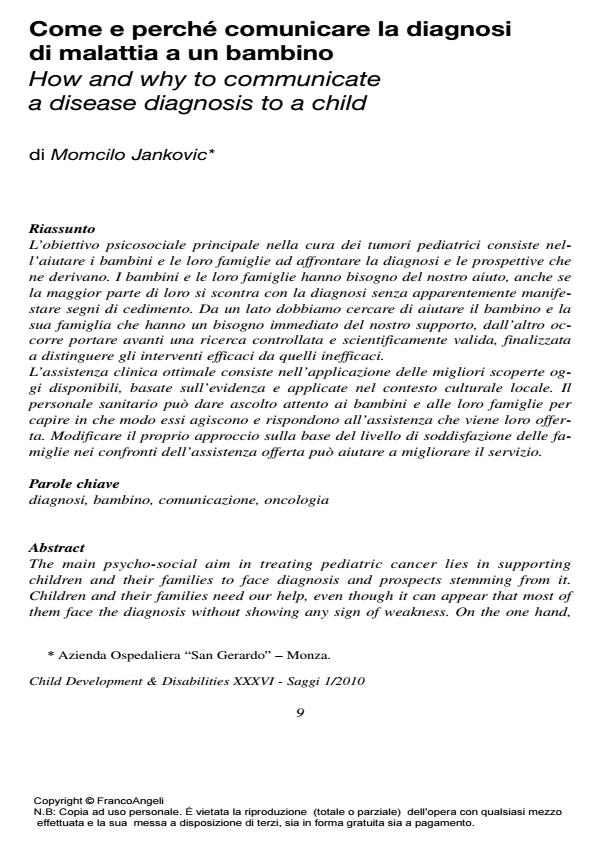How and why to communicate a disease diagnosis to a child
Journal title CHILD DEVELOPMENT & DISABILITIES - SAGGI
Author/s Momcilo Jankovic
Publishing Year 2011 Issue 2010/1
Language Italian Pages 12 P. 9-20 File size 288 KB
DOI 10.3280/CDD2010-001002
DOI is like a bar code for intellectual property: to have more infomation
click here
Below, you can see the article first page
If you want to buy this article in PDF format, you can do it, following the instructions to buy download credits

FrancoAngeli is member of Publishers International Linking Association, Inc (PILA), a not-for-profit association which run the CrossRef service enabling links to and from online scholarly content.
The main psycho-social aim in treating pediatric cancer lies in supporting children and their families to face diagnosis and prospects stemming from it. Children and their families need our help, even though it can appear that most of them face the diagnosis without showing any sign of weakness. On the one hand, the child and its family have to be assisted, as both are in need of our immediate support. On the other hand, it is essential to carry on a scientifically sound and well checked research, aiming at drawing a distinction between effective and ineffective treatments. The best clinical care is to apply the top findings that are today available, based on evidence and suited to local, cultural context. Healthcare professionals have to pay attention to what children and their families say, in order to understand how they act and react to the provided treatments. Changing the approach according to the rate of the families’ satisfaction vis-à-vis the provided care can help to improve the service.
Keywords: Diagnosis, child, communication, oncologybamb
Momcilo Jankovic, Come e perché comunicare la diagnosi di malattia a un bambino in "CHILD DEVELOPMENT & DISABILITIES - SAGGI" 1/2010, pp 9-20, DOI: 10.3280/CDD2010-001002